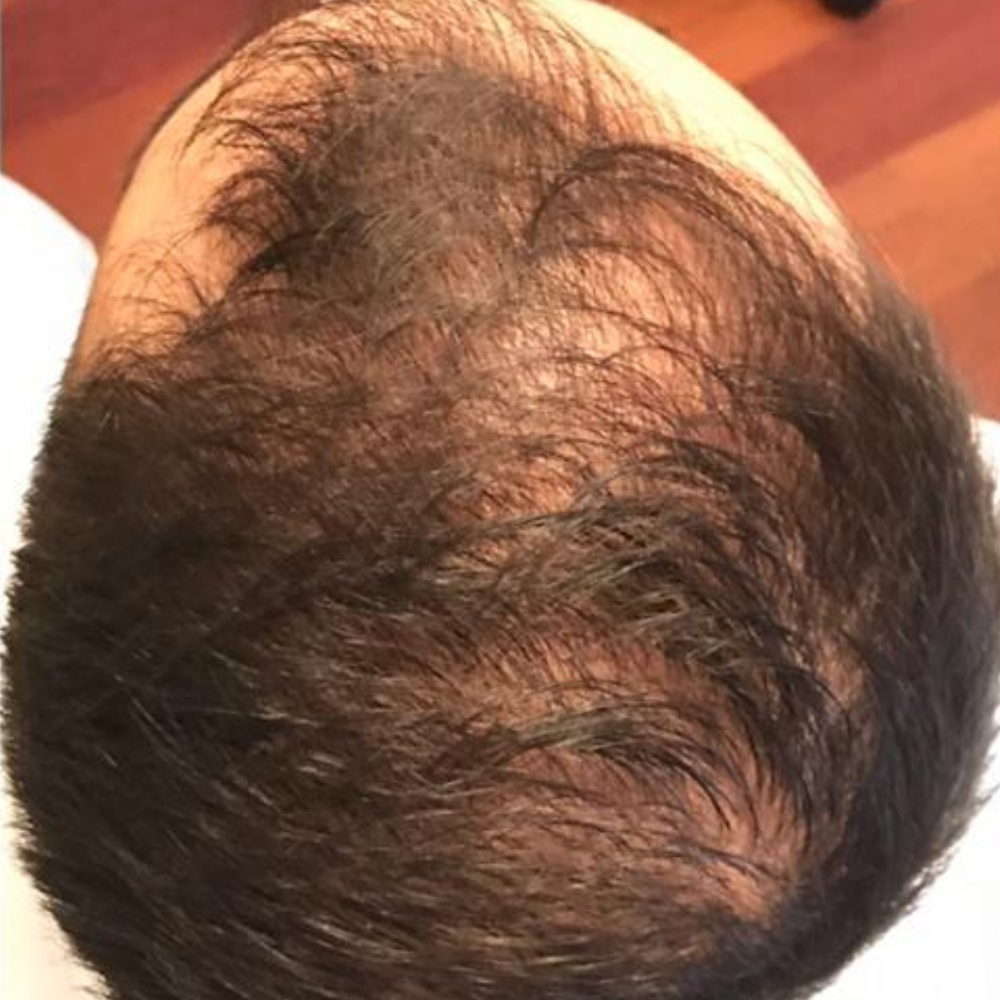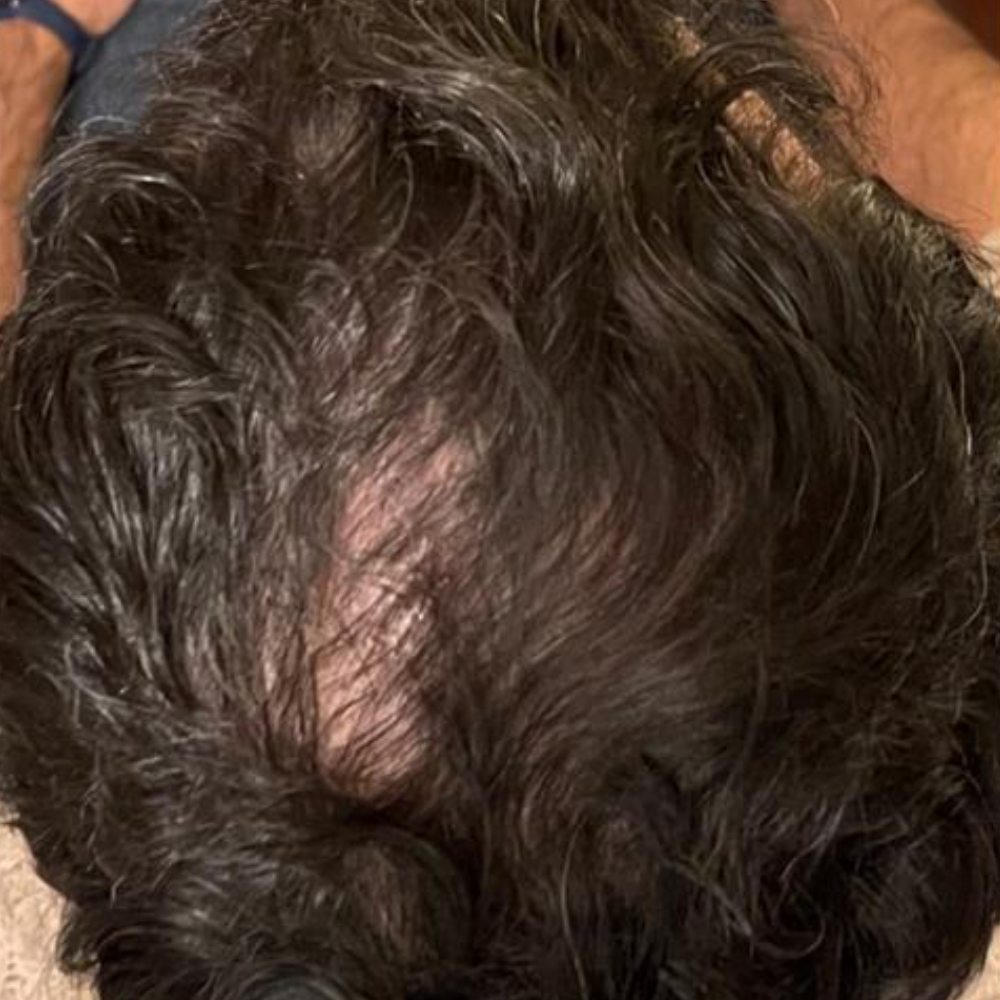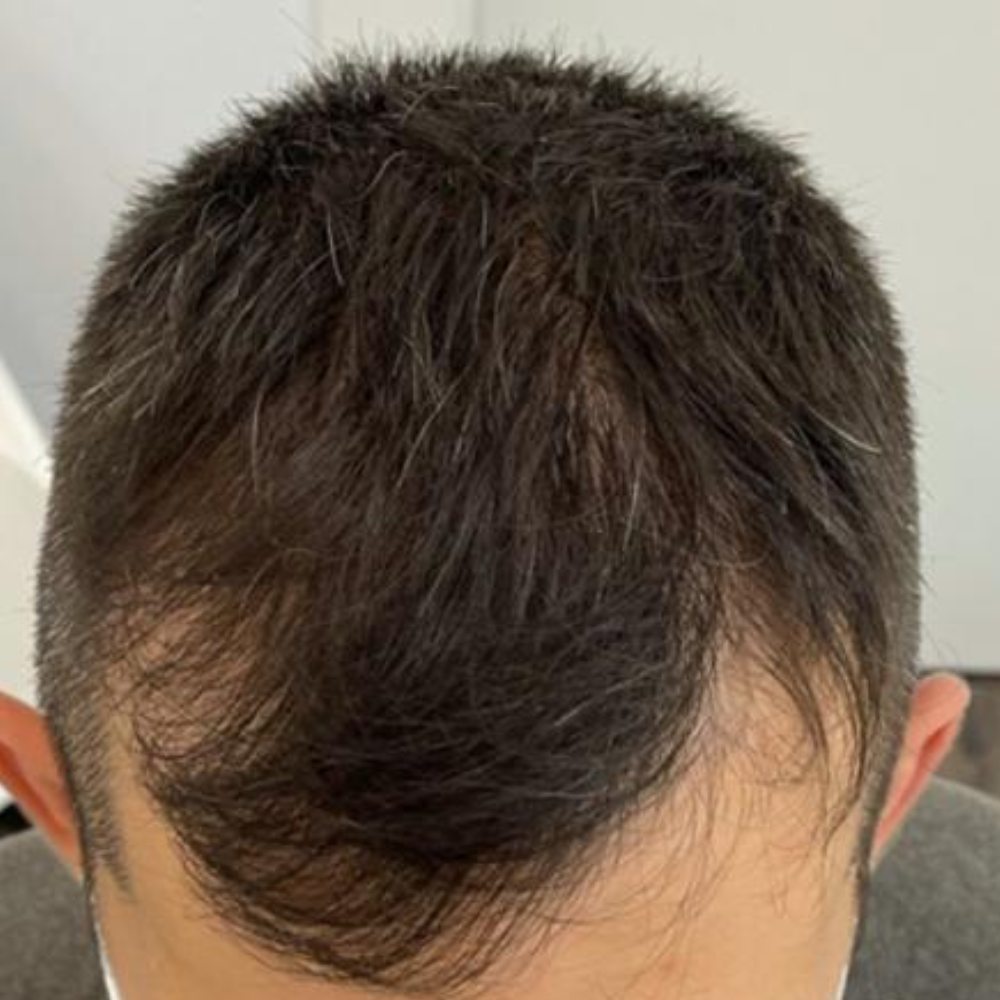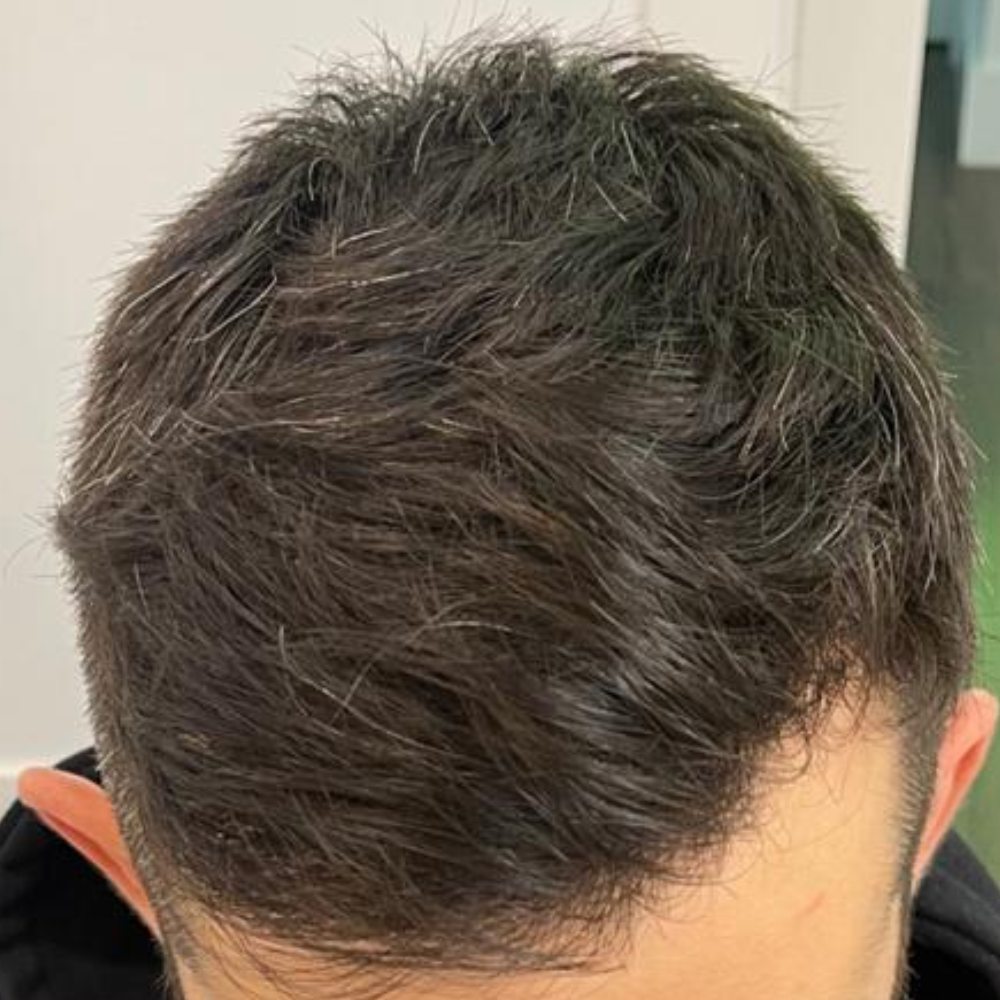Hair loss is a very common reason for consultation at our clinic. It is a symptom that affects both men and women during certain seasons of the year. Baldness or alopecia is the abnormal absence of hair. Our trichology unit identifies the causes of the loss of hair and then recommends the most appropriate treatment to restore hair density.
What is alopecia?
Alopecia -popularly known as baldness- is the temporary or permanent loss of hair. This symptom can be due to multiple factors: heredity, hormonal changes, medical pathologies or the natural ageing process itself. It is also a condition that affects mostly men.
Some people prefer to let alopecia run its course. However, nowadays there are multiple procedures to eradicate hair loss and guarantee the maintenance of existing hair in the future. Before starting treatment, it is essential to arrange a visit with a trichologist who is an expert in alopecia to assess the particular type of alopecia.
Types of alopecia or hair loss
We distinguish between two types of alopecia:
Scarring alopecia
Those in which the hair follicle is destroyed.
In this type of alopecia, whether due to an immunological or allergic mechanism or another type of unknown cause, the follicle or hair root is destroyed. It is characterised by the appearance of whitish areas of the scalp, where there is no hair, either in the frontal area -frontal fibrosing alopecia -, in a scattered form – flattened hairline- or with a lot of inflammation -decalvans folliculitis -.
Patients suffering from scarring alopecia are often very concerned about the evolution of their alopecia. In general, a process such as frontal fibrosing alopecia can last between 5 and 10 years. Lichen planus pilaris can last five years. Folliculitis decalvans can last about eight years. These types of processes are chronic in nature and require long-term treatment.
Non-scarring alopecia
The hair follicle remains, but it is dormant and no hair grows.
We distinguish between four types of non-scarring alopecia:
Causes of alopecia
The most determining factors in hair loss are:
Hair loss treatment in London
At the De Felipe Clinic we combine the latest technology in hair loss treatment with the most precise routines. We tell you about our procedures.
INFILTRATIONS WITH MINOXIDIL, TRIAMCINOLONE OR CORTICOSTEROIDS
These infiltrations are performed every 15 to 30 days. A vibratory system is used to reduce and minimise pain, as well as some anaesthesia contained in the infiltration.
INFILTRATION USING PRP
Platelet rich plasma contains many growth factors to stimulate resting follicles.
NANOFAT
This involves the removal of fat from an area of the body such as the abdomen or legs. The mesenchymal stem cells mixed with the fat are then filtered and separated. These stem cells are injected into the scalp to regenerate the lost follicles.
LOW POWER OR LED LASER
The low power laser emits a wavelength in the red spectrum, from 635 to 685 nm in length. This type of colour acts as an anti-inflammatory and stops or reduces the progression of alopecia.
ANTI-INFLAMMATORY OR IMMUNOSUPPRESSANTS
On some occasions, when local or topical treatment is not sufficient, anti-inflammatory or immunosuppressive drugs -prednisone, prednisolone or cyclosporine- are administered.
SLIQUID SOLUTIONS
Liquid solutions using specific formulations prepared by your dermatologist.
MEDICATIONS
There are drugs that act as inhibitors of the enzyme that produces dihydrotestosterone from testosterone – 5 alpha reductase (5AR). These substances can be administered locally by lotion, infiltration and orally by pills.
PLATELET-RICH PLASMA OR PRP
PRP is the platelet-rich plasma fraction, which contains many growth factors. The procedure to obtain it consists of extracting blood from the patient, centrifuging it and then separating the central and upper part, which is the richest in platelets. Platelets are rich in growth factors because they are the cells responsible for clot formation and wound repair.
EXOSOMES
Exosomes are small vesicles produced by stem cells that are filled with growth factors and other substances to activate the hair. Today they are a backbone of regenerative medicine as they contain more growth factors than PRP itself.
LOW POWER LASERS
Red light around the wavelength of 635 nm is known to stimulate hair growth. Nowadays, it is used in multiple devices for both home and clinical use, as they have a much higher power.
MINOXIDIL
This drug is an arterial vasodilator used in heart failure or high blood pressure. It was first used as a lotion in 1988. Nowadays it is used in infiltration form, as it penetrates 100 times better and is much more effective.
SAW PALMETTO
It is a potent inhibitor of the enzyme responsible for the conversion of testosterone to DHT, 5 alpha reductase (5AR). It is taken in capsule form and is a natural product that is not considered a medicine.
KETOCONAZOL
Ketoconazole is an antifungal. It is known to have a very similar effect on hair as minoxidil. It is recommended in topical solutions on the scalp and in shampoo formulations.
INFILTRATIONS
There is a fabulous drug that stimulates hair growth through 5 alpha reductase (5AR). It is also given in tablet form orally. Nowadays, the preferred route for dermatologists is the infiltration of the scalp.
INFILTRATIONS
Possibly the most effective treatment for alopecia areata is infiltration with corticosteroids such as prednisone, triamcinolone or prednisolone.
LOW POWER LASER
Another very effective treatment for alopecia areata is the low power laser. The anti-inflammatory effect of red light is very powerful and induces hair growth.
IMMUNOSUPPRESSANTS
In the most complicated cases, alopecia areata spreads throughout the scalp and to other regions of the body. In this case, we need to administer immunosuppressants such as corticosteroids or cyclosporine orally.
DIFENCIPRONE
In the past, and still today in many places, scalp irritants such as diphenciprone are administered. The problem with this treatment is that it is tedious and time-consuming, so it is replaced by simpler procedures.
VITAMIN AND NUTRITIONAL SUPPLEMENTS
Vitamin and nutritional supplements, which will have to be adjusted to each case.
LOTIONS OR SERUMS
It is also beneficial to use lotions or serums that regulate the hair cycle and strengthen the hair.
MELATONIN
Medications such as melatonin may also be useful.
PLATELET RICH PLASMA (PRP)
Platelet Rich Plasma (PRP) is another technique that can be useful in selected cases that are resistant to conventional treatment.
STIMULATION OF THE PILOSEBACEOUS FOLLICLES
The treatment of anagen effluvium consists of stimulating the pilosebaceous follicles to produce hair and prevent them from entering a ketogenic or resting phase.
Price of our hair treatments
Here you can check the price of the different hair procedures:
Hair treatment before and after
The result of our combined programme achieves truly satisfactory results as shown. In addition to the different techniques, our hair expert staff will carry out an exhaustive follow-up of the treatment to modify the doses or the programme itself if necessary. The patient can guarantee that he or she will have more hair than in the initial phase. Make an appointment now with one of our trichologists and ask any questions you may have. We will be happy to help you at the De Felipe Dermatology clinic.






Frequently asked questions about hair loss
The most frequently asked questions about alopecia treatment are: